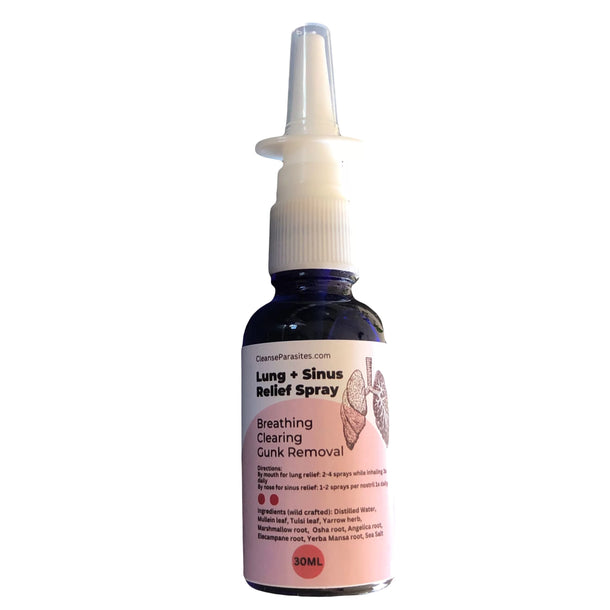By: Dr. Jason Dean
A large percentage of Americans are dealing with skin issues in one way or another.
They run off to the dermatologist to get the latest steroid and antibiotic or the latest over-the-counter “cure.”
This is why we go for the Source.
Eventually psoriasis is really the fungus! Yes, it is the fungal infection of the skin and it is contagious.
I am not saying that it is just fungal infection – Autonomic Nervous System dysfunction plays major role but what causes the primary immune reaction or suspected vasoconstriction in the skin?
Scaly plaques are full of bacteria no doubt about that but the primary cause of immune reaction and the reason why psoriasis plaque develop may be the same as in a disease called Tinea corporis generally known under the name ringworm.
What causes ringworm?
Ringworm.Image source: CDC/Dr. Lucille K. Georg Creation Date: 1969
Ringworm (this term in medicine is referred as to – Tinea) is a fungal infection caused by dermatophyte fungus of the 3 genera: Microsporum, Epidermophyton and Trichophyton.
Depending on where the infection is localized the disease is called Tinea corporis (body), Tinea capitis (scalp), Tinea pedis (foot), Tinea unguium (nails – onychomycosis), etc…
The fungi that cause this disease are common organisms living on the normal skin of healthy person. However when there is some opportunity the fungus may spread and induce a rash or more serious skin lesions.
I think that one of those more serious skin lesions we call psoriasis.The smaller patch is the guttate psoriasis, the bigger patch is ringworm.
The smaller patch is the guttate psoriasis plaque. The bigger patch is (probably) the fungal infection – at least the most dermatologists would say that after the first examination of the rash.
So it is very possible that psoriasis is “just” a fungal infection of the skin caused by the diminished blood flow in the upper part of the skin due to Autonomic Nervous System dysfunction.
The only difference between the ringworm and psoriasis is that in psoriasis the Autonomic Nervous System is underperforming and fungus can spread. It is easily deducted from the act that psoriasis spreads symmetrically. Basically due to localized vasoconstriction on the same spots on both sides of the body.
Psoriasis is really caused by ringworm fungus?
Probably yes.
So what about the differences between psoriasis patch and ringworm rash?
The fact that psoriasis spreads symmetrically and it is more scaly mostly in the center of the lesions when compared to ringworm rash (Tine corporis).
Those two parameters could be easily explained by Autonomic Nervous System caused vasoconstriction (low blood flow also potentiated by coagulation cascade – fibrin and platelets aggregation) in psoriasis. When this happens the ringworm fungi can infect the skin more easily and mostly the immune system is not capable of killing it due to decreased blood flow in the area.
Proofs that psoriasis is the fungal infection
1. Broken off hair
One of the symptoms of fungal infections that cause Tinea corporis or Tinea capitis (fungal infection of the body and scalp respectively) is hair damage at the place of infected area. In case of Tinea capitis it is clearly visible that the hair is missing – bald patches on the scalp form usually the circles.
Broken off hair caused by Tine capitis.Image source: Pai VV, Hanumanthayya K, Tophakhane RS, Nandihal NW, Kikkeri NN. Clinical study of Tinea capitis in Northern Karnataka: A three-year experience at a single institute. Indian Dermatol Online J [serial online] 2013 [cited 2015 Jun 27];4:22-6. Available from: http://www.idoj.in/text.asp?2013/4/1/22/105461
This is a “black dot” Tinea capitis which presents when the hair are broken off at the scalp level.
Those “missing” hairs in Tinea capitis are actually there, I mean they didn’t fall off.
Actually those hairs are broken off at the level of the skin.
The cause of this broken off hair is fungal invasion of the hair shaft what makes the hair break down into pieces.
However Tinea capitis (we are still talking about the ringworm causing fungi) may manifest also as a dry grey patch which really resembles the psoriasis plaque.
Gray type of Tinea capitis resemples scalp psoriasis.Image source: Pai VV, Hanumanthayya K, Tophakhane RS, Nandihal NW, Kikkeri NN. Clinical study of Tinea capitis in Northern Karnataka: A three-year experience at a single institute. Indian Dermatol Online J [serial online] 2013 [cited 2015 Jun 27];4:22-6. Available from: http://www.idoj.in/text.asp?2013/4/1/22/105461
This is a gray type of Tinea captitis. Doesn’t it look like a scalp psoriasis?
And now look at this photo of psoriasis plaque. There are also the broken off hair! Just like in case of scientifically confirmed Tinea capitis (ringworm on the body) caused by fungal infection!
Broken off hair in the psoriasis plaque are caused by fungal infection. You can see also from one hair follicle there growing 2 hairs which also may be caused by fungal infection in my opinion.
Here are the 3 photos of how fungi can grow through the hair. The photos are from the scientific paper “Fungal Tunneling of Hair from a Buried Body” [3]:
Those dark lines are actually a fungal tunnels as the fungus grows through the hair shaft.Image source: DeGaetano, D. H., Kempton, J. B., and Rowe, W. F., “Fungal Tunneling of Hair from a Buried Body,” Journal of Forensic Sciences, JFSCA, Vol. 37, No. 4, July 1992, pp. 1048-1054.
Branching of the fungus in the hair shaft.Image source: DeGaetano, D. H., Kempton, J. B., and Rowe, W. F., “Fungal Tunneling of Hair from a Buried Body,” Journal of Forensic Sciences, JFSCA, Vol. 37, No. 4, July 1992, pp. 1048-1054.
The entrance where the fungus enters into the hair shaft.Image source: DeGaetano, D. H., Kempton, J. B., and Rowe, W. F., “Fungal Tunneling of Hair from a Buried Body,” Journal of Forensic Sciences, JFSCA, Vol. 37, No. 4, July 1992, pp. 1048-1054.
2. Hair follicle allows the fungus to get literally under the skin
Most psoriasis plaques usually start where the hair grows out of the skin.
Why?
Actually it is the weakest point of the physically* and chemically* undamaged skin. This is also why scalp psoriasis is often the hardest to clear up. Thousands of hair follicles provide the many chances for fungi to get under the skin and spread.
Psoriasis plaque starts forming around the hair follicle.
Why and how does fungus invade the skin in the spot where the hair grows out?
The answer is: Autonomic Nervous System dysfunction and oxygen deprived skin.
*Physical and chemical damage to skin:
Fungi as well as bacteria live in symbiosis on our skin but if we damage our skin then some pathogen can cause infection.
Physical damage:
Burn, cut, scratch – all those types of physical damage to skin are linked to induction of psoriasis plaque. We call this Koebner phenomenon. The real cause of this is fungal infection accompanied by ANS dysfunction and bad blood flow.
Chemical damage:
You probably know those people who use a lot of soaps or dish cleaners without gloves. They constantly disrupt the protective layer on their skin and kill the beneficial bacteria on their hands. Then they develop dry skin, redness and often very itchy skin. Those symptoms are usually caused by opportunistic fungal infection that could penetrate into the skin because of damaged or completely missing protective layer.
3. Shaving the hair improves psoriasis
Shaving the hair ANYWHERE on the body often improves psoriasis plaques. In some people it can completely clear up their skin.
Most people don’t think about that this way but the men who shave their heads usually significantly improve their scalp psoriasis. In case of serious Autonomic Nervous System dysfunction and bad blood flow which allows the fungi invade the hair follicles and skin the skin won’t clear up completely but the improvement is usually marked.
Now we should try to answer why shaving the hair improves the psoriasis lesions?
- It may be caused by the fact that the hair shaft may contain the fungus. This fungus may irritate or fool the Autonomic Nervous System and immune system which may “unintentionally” cause the vasoconstriction and inflammation in that area more that it is appropriate; just like in case of classic ringworm infection which starts and goes away shortly (days to weeks).
- It may be caused by the fact that the hair follicle may tighten up so it is better protected from the fungus on the skin and makes it harder to invade the hair follicle.
- It may be caused by the fact that Autonomic Nervous System (ANS) works better since the hair is the part of ANS so if you shave the hair the ANS may somehow work better or is not “confused” for some reason.
Fungal infections as cause of “autoimmune” diseases
There is at least one documented case of Tine corporis in patient with psoriasis.[1] We can say how somebody with overactive immune system (the official explanation of psoriasis) can contract also the opportunistic fungal infection of the skin?
You may say it is just one case, but actually who really thoroughly do some research of psoriasis pathogenesis? Most of the research is focused just on immune system and researchers are looking at psoriasis as the autoimmune disease. And it is NOT the autoimmune disease!
There are also another paper describing the fungal infection of the skin which resembles the symptoms of lupus erythematosus.[2]
So do you still think that psoriasis is strictly non-contagious? I wouldn’t say so.
References:
1) Laguna C. Tinea corporis in a psoriatic patient. Mycoses. 2012 Jan;55(1):90-2.
– http://www.ncbi.nlm.nih.gov/pubmed/21615530
2) Kamalam A, Thambiah AS. Lupus erythematosus like tinea capitis caused by Trichophyton tonsurans. Mykosen. 1984 Jun;27(6):316-8.
3) DeGaetano, D. H., Kempton, J. B., and Rowe, W. F., “Fungal Tunneling of Hair from a Buried Body,” Journal of Forensic Sciences, JFSCA, Vol. 37, No. 4, July 1992, pp. 1048-1054.











